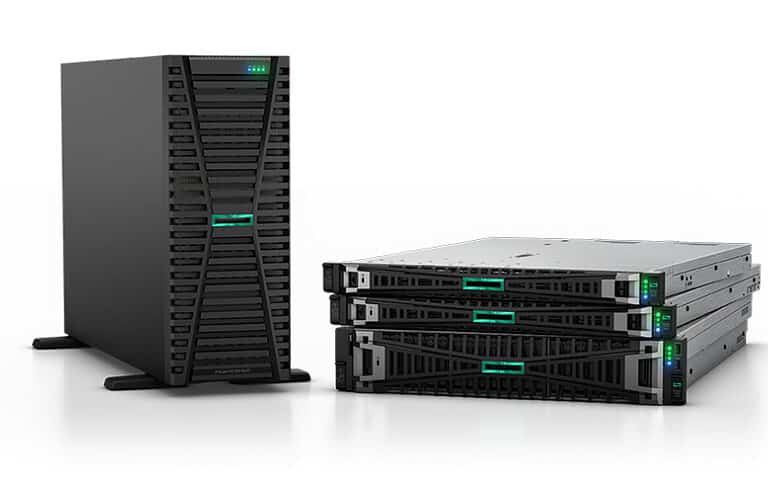HPE introduced four ProLiant Gen11 servers based on Intel’s latest Sapphire Rapids processors. The servers perform faster and more energy-efficient than comparable models from the previous generation, Gen10.
ProLiant is one of HPE’s flagship series. Companies worldwide use the servers for a variety of on-premises workloads, from software-defined computing to artificial intelligence. New generations bring new processors and more capacity. The ProLiant Gen11 series was unveiled in November 2022. The first models have been available since then.
HPE recently unveiled an expansion. The organization launched four models based on Intel’s latest server processors: 4th Gen Xeon Scalable, also known as Sapphire Rapids. The processors vastly outperform the previous generation, Intel Ice Lake. We covered the series in an extensive blog.
Servers
HPE’s launch consists of the HPE ProLiant DL320 Gen11, DL360, DL380 and ML350. HPE designed each model for specific applications.
The ProLiant DL320 Gen11 is tailored to modernize workloads in edge environments. HPE recommends the model for virtual desktop infrastructure (VDI), video streaming and analytics.
Next in line is the ProLiant DL360 Gen11, designed for a variety of workloads in virtual machines, on bare metal and in containers. This model has dual sockets in a U1 design.
The ProLiant GL380 has dual sockets in a U2 design. According to HPE, this model is suitable for demanding workloads that benefit from advanced DPUs and GPUs.
Finally, there’s the ProLiant ML350 Gen11, a tower server that broke six world records concerning energy efficiency. The model is tailored to organizations looking for as much performance per watt as possible.
Security and management
All ProLiant Gen11 models support HPE GreenLake Compute Ops Management. The solution provides a cloud-native management interface for servers in multiple locations.
HPE GreenLake Compute Ops Management is optional. Customers can also manage through HPE iLO, HPE’s trusted management solution. Furthermore, there’s support for OpenBMC, an open-source alternative.
As for security, HPE integrated Silicon Root of Trust to protect firmware from ransomware and other malware. In addition, Secure Device Identity guards unique server identities. Finally, Trusted Platform Modules (TPMs) provide an additional authentication layer.
